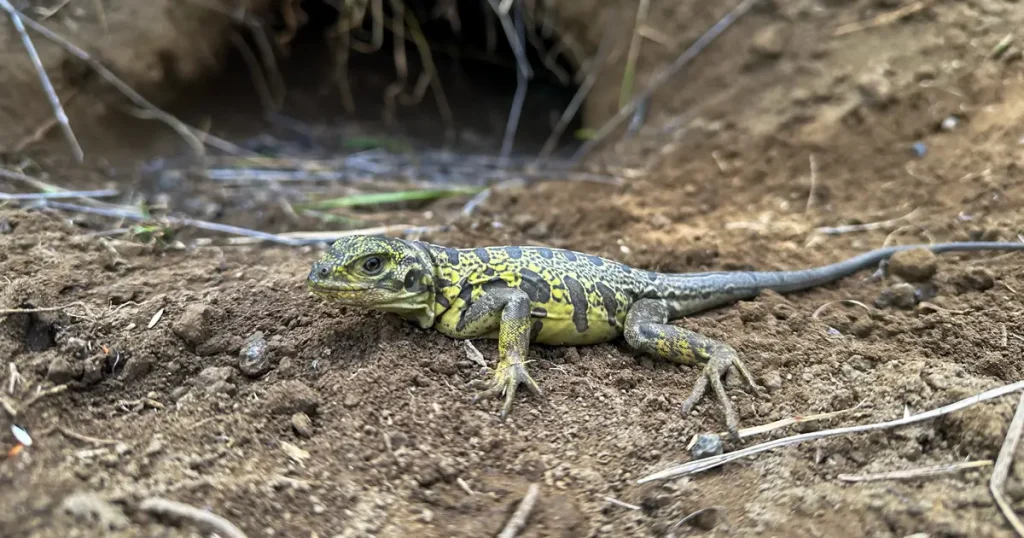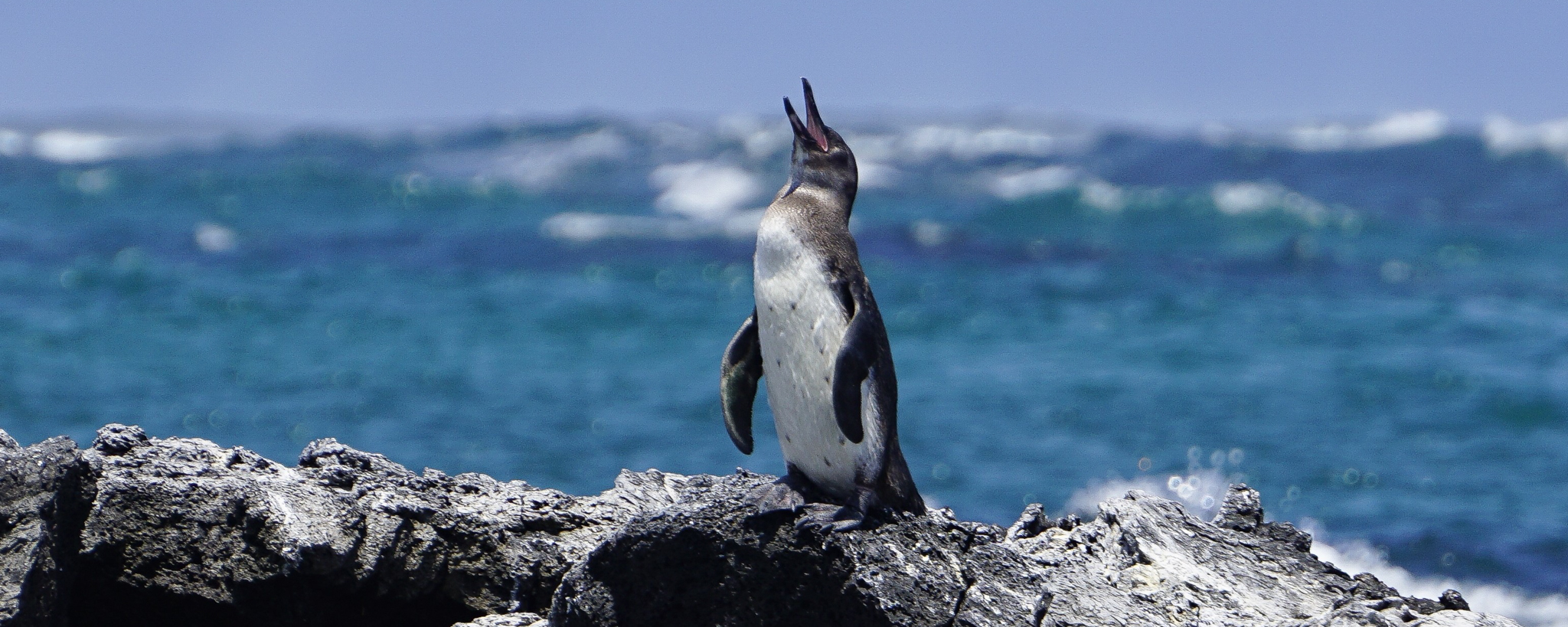
[Watch] Field Transmissions Livestream: Supporting Research to Increase the Galápagos Penguin Population
Watch a recording of our special World Penguin Day episode of Field Transmissions with Penguin experts and Galápagos Conservancy partners Dr. Dee Boersma and Caroline Cappello, and read more about our work to save endangered species below.
Today, in honor of World Penguin Day, we’re celebrating one of the most iconic species in the Islands, the Galápagos Penguin! Many visitors to Galápagos are surprised to learn that penguins reside here on the equator, so far north of their traditional Antarctic and sub-Antarctic habitats. In fact, their presence is made possible by Galápagos’ unique position at the nexus of four major ocean currents that bring both warm and cold waters to the Islands. That’s why Galápagos can support a wider variety of marine species than just about anywhere else in the world. Upwellings from these currents are the building blocks for the incredible web of life in the Galápagos Marine Reserve and newly created Hermandad Marine Reserve, allowing tropical species like reef sharks, Green Sea Turtles, and Blue-footed Boobies to coexist with cold-water species like penguins, sardines, and Waved Albatross.
The Galápagos Penguin (Spheniscus mendiculus) is one of the smallest penguins in the world and is endemic to the Galápagos Islands, where they live and breed year round. They are the rarest species of penguin in the world. And like most other species of penguins, they are monogamous, mating with one partner for life.
Because of the species’ small population, restricted range, climate change, introduced predators, and loss of nesting sites, the Galápagos Penguin is categorized as endangered by the International Union for Conservation of Nature (IUCN) Red List. The current population is likely somewhere between 1,500 and 4,700 penguins, which is estimated to be about half of what it was in the 1970s.
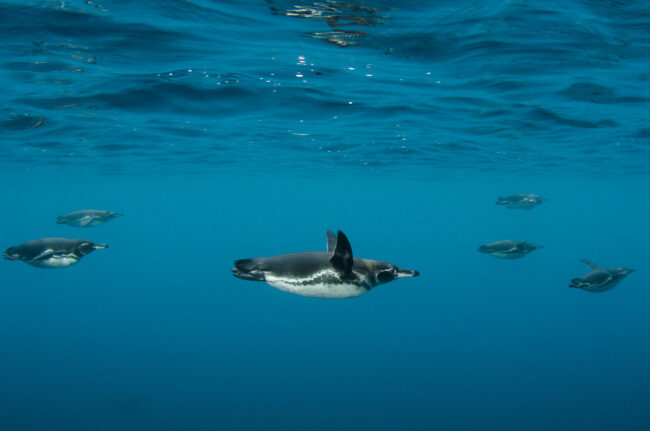
Galapagos Penguins © Pete Oxford
When species become endangered, it’s a sign that an ecosystem is out of balance. The loss of one species can be catastrophic, often triggering major consequences and challenges for others. However, simple conservation actions can help avoid species loss.
That’s why since 2010, in coordination with the Galápagos National Park Directorate (GNPD), Galápagos Conservancy has partnered with University of Washington penguin expert Dr. Dee Boersma to construct, maintain, and monitor 120 artificial penguin nests. In some areas, these nests now account for nearly 50% of penguin breeding activity.
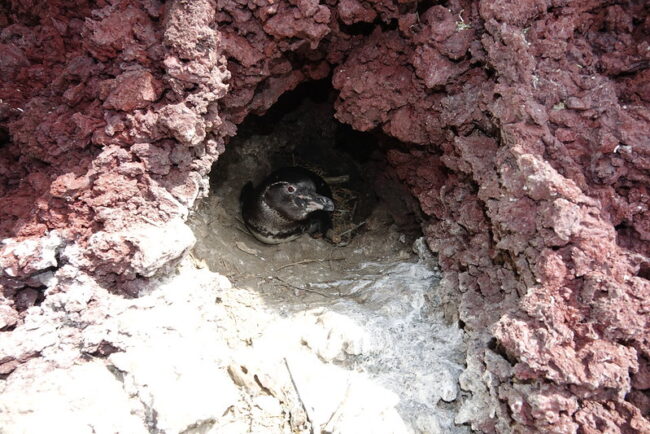
Galapagos Penguin inside an artificial nest © Dr. Dee Boersma
Each year, Dr. Boersma and her team make two trips to the Galápagos Islands to measure and weigh penguins to evaluate body condition, as well as to carry out population monitoring that helps to determine the health and size of the population.
In February 2022, the scientists visited the habitat of the penguins at Isabela, Fernandina, and Bartolomé Islands to evaluate the health of the brood and the presence of juveniles. They also conducted any necessary maintenance on the nests and assessed the ratio of juveniles to adults, a key indicator of the health of the population.
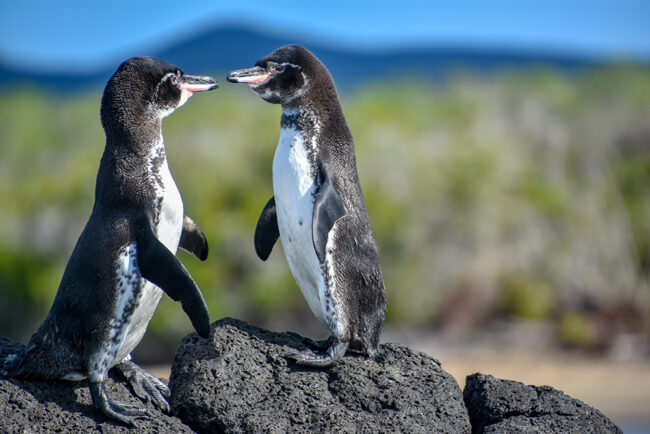
Galapagos Penguins © Gillian Shields
During the expedition, they counted 267 total penguins, 2% of which were juveniles, indicating a successful breeding season. If there are no juveniles, the population is likely declining.
With the support of Galápagos Conservancy, during 2022 the team will continue these activities and also construct an additional 10 or more artificial nests for the less-studied Floreana Island sub-population that is genetically distinct and geographically separate from other Galápagos Penguins. Little is known about this population and only two nests have been documented in the past.
The biggest threats to Galápagos penguins are climate change, introduced species, overfishing, and mismanagement of fisheries. Other threats include petroleum and plastic pollution, toxic algae blooms, disease, and the introduction of non-native plants that degrade breeding habitat.
